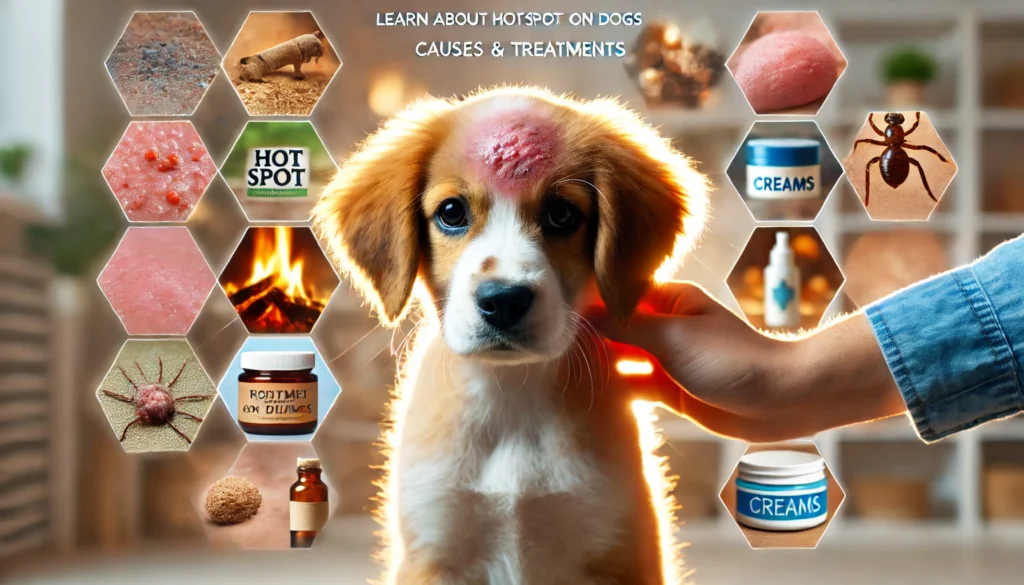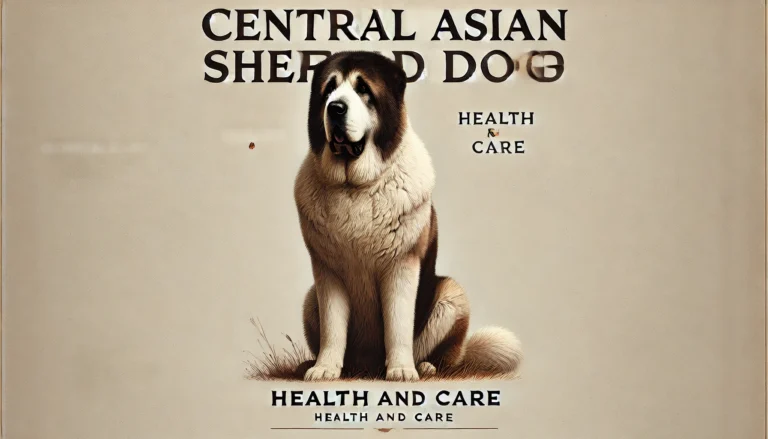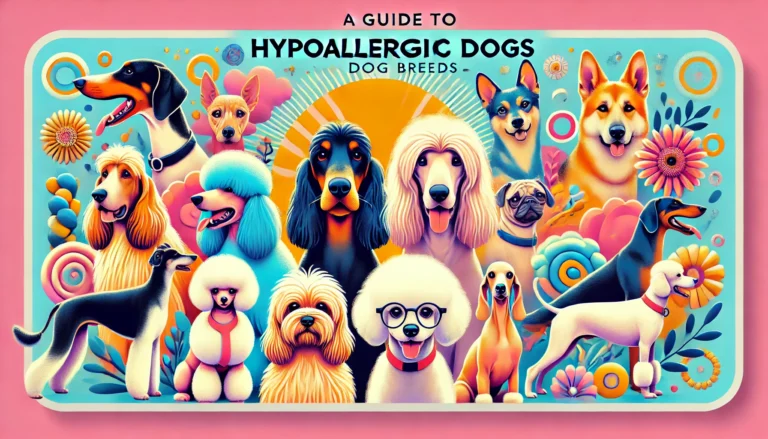Hot Spots on Dogs: Causes, Treatment, and Home Remedies

how to treat hot spots on dogs at home
Hot Spots, also known as acute moist dermatitis, are one of the most common skin conditions in dogs, characterized by rapid onset and the potential for quick spread. These inflamed, infected areas can make a dog extremely uncomfortable and, if not treated promptly, can lead to more serious complications. This article explores in-depth the causes, symptoms, treatments, and home remedies for managing hot spots in dogs.

What Are Hot Spots on Dogs?
Hot spots are painful, red, and moist lesions that appear on a dog’s skin, often covered by matted fur. These lesions can appear anywhere on the body but are most commonly found on the head, limbs, and hips. Hot spots can grow rapidly due to dogs licking, chewing, and scratching the affected areas.
Causes of Hot Spots on Dogs
Several factors can trigger the development of hot spots in dogs:
- Allergies: Allergens from the environment, such as pollen, dust, or mold, can lead to itching and scratching that initiates hot spots. Food allergies or sensitivities also play a role.
- Poor Grooming and Hygiene: Lack of regular grooming can lead to matted fur and trapped moisture, creating an ideal environment for bacteria to breed.
- Parasites: External parasites like fleas and mites can cause severe itching and lead to hot spots.
- Ear Infections and Anal Gland Disease: Dogs with chronic ear infections or anal gland issues may scratch vigorously, causing hot spots to develop nearby.
- Behavioral Issues: Stress, anxiety, and boredom can lead to compulsive licking and chewing, initiating hot spot formation.
Symptoms to Watch For when You See Hot Spots on Dogs
Identifying hot spots early can prevent them from worsening. Symptoms include:
- Red, moist lesions on the skin
- Sudden onset of itching and scratching
- Hair loss around the lesion
- Odor and discharge from the affected area
- Visible pain and discomfort
Professional Treatment for Hot Spots
Veterinary intervention is crucial for effectively managing hot spots. Treatment typically involves:
- Clipping and Cleaning: Removing hair around the hot spot and cleaning the area with a gentle antiseptic to facilitate healing.
- Medications: Topical medications to combat infection and oral antibiotics if the infection is deep or widespread.
- Anti-Inflammatories: Corticosteroids to reduce inflammation and pain.
- E-Collars: Preventing the dog from licking or biting the affected area is essential for healing.
Home Remedies for Hot Spots
Alongside veterinary treatment, certain home remedies can help soothe hot spots:
- Cool Compresses: Applying cool compresses several times a day can help soothe the pain and reduce inflammation.
- Herbal Tea Rinses: Green tea and chamomile have natural soothing properties. Steep the tea, cool it down, and apply it to the affected area.
- Aloe Vera: Pure aloe vera gel can cool and calm the skin. Ensure it’s free from additives and alcohol.
- Apple Cider Vinegar: Diluted apple cider vinegar can help disinfect the area. Use only on unbroken skin.
- Oatmeal Baths: A lukewarm oatmeal bath can soothe itchy skin and help calm inflammation.
Preventing Hot Spots
Prevention is always better than treatment when it comes to hot spots. Steps include:
- Regular Grooming: Brushing your dog regularly prevents matting and removes irritants from the coat.
- Proper Flea Control: Use flea prevention treatments year-round.
- Diet and Supplements: A well-balanced diet rich in omega-3 fatty acids can improve skin health.
- Environmental Management: Reduce stress and boredom with regular exercise and mental stimulation.
- Monitor for Early Signs: Regularly check your dog’s skin for early signs of irritation or infection.
Do you know?
Cane Corsos can be good family dogs if they are well-trained and socialized from a young age. They are protective and loyal to their families.
Conclusion
Hot spots can be a distressing condition for dogs, but with prompt and appropriate care, they can be managed effectively. Understanding the underlying causes and early intervention is key to preventing serious complications. Regular veterinary check-ups, proper grooming, and attentive care can help keep your dog’s skin healthy, preventing the occurrence of hot spots and ensuring your pet remains happy, active, and comfortable.
How do you treat a dog’s hotspot?
Clean the area with antiseptic, clip the fur around it, apply a topical antibiotic, and prevent the dog from licking it.
What does a hotspot look like on a dog?
A hot spot is a red, moist, irritated area, often with hair loss and sometimes oozing pus.
How long does it take for a hot spot to heal?
With proper treatment, a hot spot can begin to improve within a few days and may heal completely in 1-2 weeks.
What food causes hot spots on dogs?
Foods that trigger allergies in susceptible dogs, like beef, dairy, wheat, or chicken, can lead to hot spots.
Should you bathe a dog with hotspots?
Only bathe a dog with hotspots if advised by a vet, using a gentle, hypoallergenic shampoo to avoid irritation.
What dog food is best for hot spots?
Hypoallergenic or limited ingredient diets that avoid known allergens can help manage hot spots.
Does coconut oil help hotspots on dogs?
Coconut oil can help soothe the skin and reduce itchiness, but it should be used as part of a comprehensive treatment plan.
Is salt water good for hot spots on dogs?
Diluted salt water can help clean the area and dry out the infection but should be used with caution to avoid drying out the skin too much.
Does stress cause hot spots in dogs?
Yes, stress can lead to excessive licking and scratching that triggers hot spot development.
Is vaseline good for hot spots on dogs?
Vaseline is not recommended for hot spots as it can trap moisture and bacteria, potentially worsening the condition.






